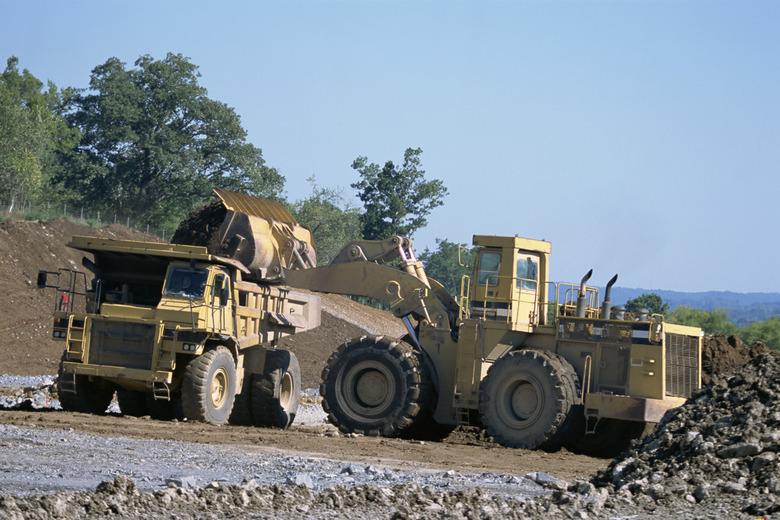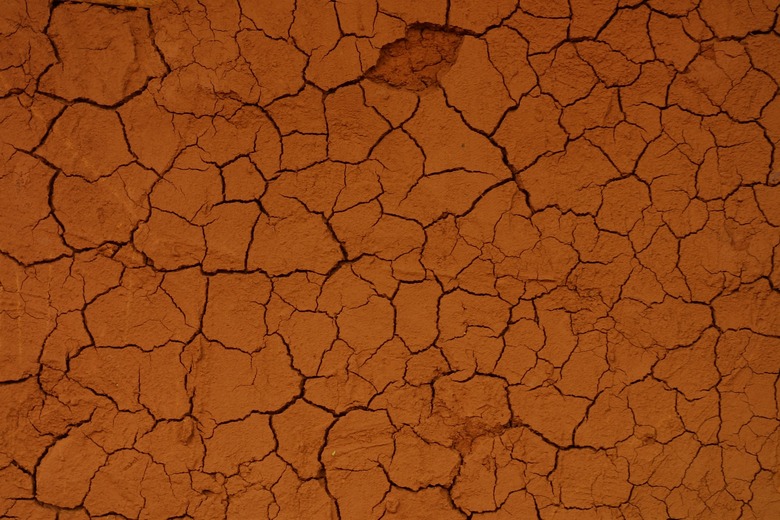What Is Astm D1557?
Soil is compacted to prepare it to support roads and building foundations. This increases its density and strength. The American Society for Testing and Materials (ASTM), has issued standards for how to test soil compaction and soil conditions after compaction. These tests determine how much compaction is required to improve the soil's shear strength and permeability.
Step 1
The original Proctor test uses the "firm stroke" of a hammer called a rammer. According to "Geotechnical Testing, Observation, and Documentation" by Tim Davis, "the standard Proctor utilizes a 5.5 lb. hammer with a 12 inch drop and three layers" of soil in a cylindrical mold. The standard Proctor test creates a force of 12,400 foot pounds per cubic feet when it falls.
Modified Proctor Test
Step 1
The modified Proctor test uses a heavier hammer, greater drop height, and more soil layers than the original Proctor test. According to "Slope Stability and Stabilization Methods" by Lee Abramson, "ASTM D1557-78 recommends a 44.6 newton (10 pound) rammer with a 457 millimeter (18 inch) drop for compacting five layers of soil in a 102 or 154 mm mold." The modified form of the Proctor test uses a free-drop of the hammer in order to mitigate the variable effects of the "firm stroke" in the original test. The hammer is dropped 25 times. The modified Proctor test creates a force of about 56,000 feet-pounds per cubic foot. According to "Geotechnical Investigation Methods" by Roy Hunt, "materials containing significant amounts of gravel are compacted in a 6 inch diameter mold by 56 blows on each of the five layers." ASTM D4718 defines how to correct the unit weight of soil that contains over-sized particles like gravel.
Step 2
- The original Proctor test uses the "firm stroke" of a hammer called a rammer.
Dry Weight Determination
Step 1
After the Proctor test or modified Proctor test is completed, the soil volume and water content are determined. The dry weight of the soil is determined from those values. According to ASTM D1557, "the degree of soil compaction required to achieve the desired engineering properties is often specified as a percentage of the modified maximum dry unit weight." Modified maximum dry unit weight can be determined by procedures in ASTM D698. ASTM D4914 can determine the un-compacted dry unit weight. ASTM D4914 is the test method of finding unit weight of soil using the sand replacement method. ASTM D6913 defines how to determine the particle size distribution via a sieve to determine if correction via ASTM D4718 is necessary.
Step 2
- After the Proctor test or modified Proctor test is completed, the soil volume and water content are determined.
- ASTM D4914 is the test method of finding unit weight of soil using the sand replacement method.
Related Standards
Step 1
ASTM D2168 is the procedure for calibrating the mechanical rammer soil compactor. ASTM D2216 is the process for determining the moisture content of the soil. ASTM D854 is the method for finding the specific gravity of soil via water pyconmeter. ASTM D4253 is the process of finding unit weight of soils by using a vibrator table.

